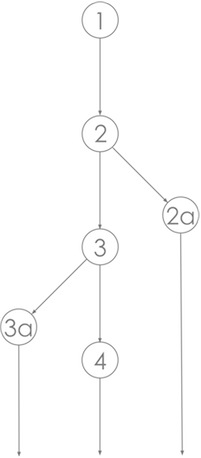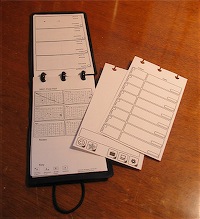 I read an interesting post on Write to Done this morning offering tips on how to break through writer’s block. The first tip: remind yourself that you’re a writer.
I read an interesting post on Write to Done this morning offering tips on how to break through writer’s block. The first tip: remind yourself that you’re a writer.
While I generally find the advice on WTD to be both useful and on target, I have to disagree with that particular tip (the rest were pretty handy). Regular readers know that I don’t call myself a wordsmith; but it might surprise you to know that I prefer not to call myself a writer either.
No, I don’t eschew the term in favor of buzzwords like “communicator” or “content provider,” either. When people ask me what I do for a living, I don’t tell them that I’m a writer.
I tell them that I write.
A pedantic distinction? Maybe — but it’s a distinction that can clear up the crippling paralysis of writer’s block once and for all.

 Freelancers who manage multiple projects understand the importance — and the difficulty — of effective time management. But simply dividing your day into discrete blocks isn’t enough.
Freelancers who manage multiple projects understand the importance — and the difficulty — of effective time management. But simply dividing your day into discrete blocks isn’t enough. While I wait for a call-back from an interviewee for an article I’m writing, I thought I’d share my technique for tracking telephone interviews.
While I wait for a call-back from an interviewee for an article I’m writing, I thought I’d share my technique for tracking telephone interviews. In the course of designing and testing
In the course of designing and testing  New Year’s Day is the traditional time for resolutions to take effect. Have you made writing and editorial resolutions for your business yet?
New Year’s Day is the traditional time for resolutions to take effect. Have you made writing and editorial resolutions for your business yet? For freelance writers, it’s all about the clip. All your research files, interview transcripts, and notes are there to help you create a professionally written product. But what do you do with the rest?
For freelance writers, it’s all about the clip. All your research files, interview transcripts, and notes are there to help you create a professionally written product. But what do you do with the rest? I discovered Merlin Mann’s
I discovered Merlin Mann’s  This afternoon I e-mailed a client, the editor of a bimonthly national magazine, with an update on an article I’m writing for her. She promptly wrote back to thank me, and also to let me that she’s been receiving many compliments on another article that I wrote that is about to go to press. “I SO appreciate your valuable contribution to [the magazine],” she wrote. “And I haven’t forgotten that you would like to do more.”
This afternoon I e-mailed a client, the editor of a bimonthly national magazine, with an update on an article I’m writing for her. She promptly wrote back to thank me, and also to let me that she’s been receiving many compliments on another article that I wrote that is about to go to press. “I SO appreciate your valuable contribution to [the magazine],” she wrote. “And I haven’t forgotten that you would like to do more.” “Nagle was forty years old then, a thin, deeply tanned former Snap-On Tool Salesman of the Year. To see him there, waiting for the fisherman in his tattered T-shirt and thrift-shop sandals, the Jim Beam he kept as his best friend slurring his motions, no one would guess that he had been an artist, that in his day Bill Nagle had been great.” — Robert Kurson, Shadow Divers (Random House, 2004), p5
“Nagle was forty years old then, a thin, deeply tanned former Snap-On Tool Salesman of the Year. To see him there, waiting for the fisherman in his tattered T-shirt and thrift-shop sandals, the Jim Beam he kept as his best friend slurring his motions, no one would guess that he had been an artist, that in his day Bill Nagle had been great.” — Robert Kurson, Shadow Divers (Random House, 2004), p5